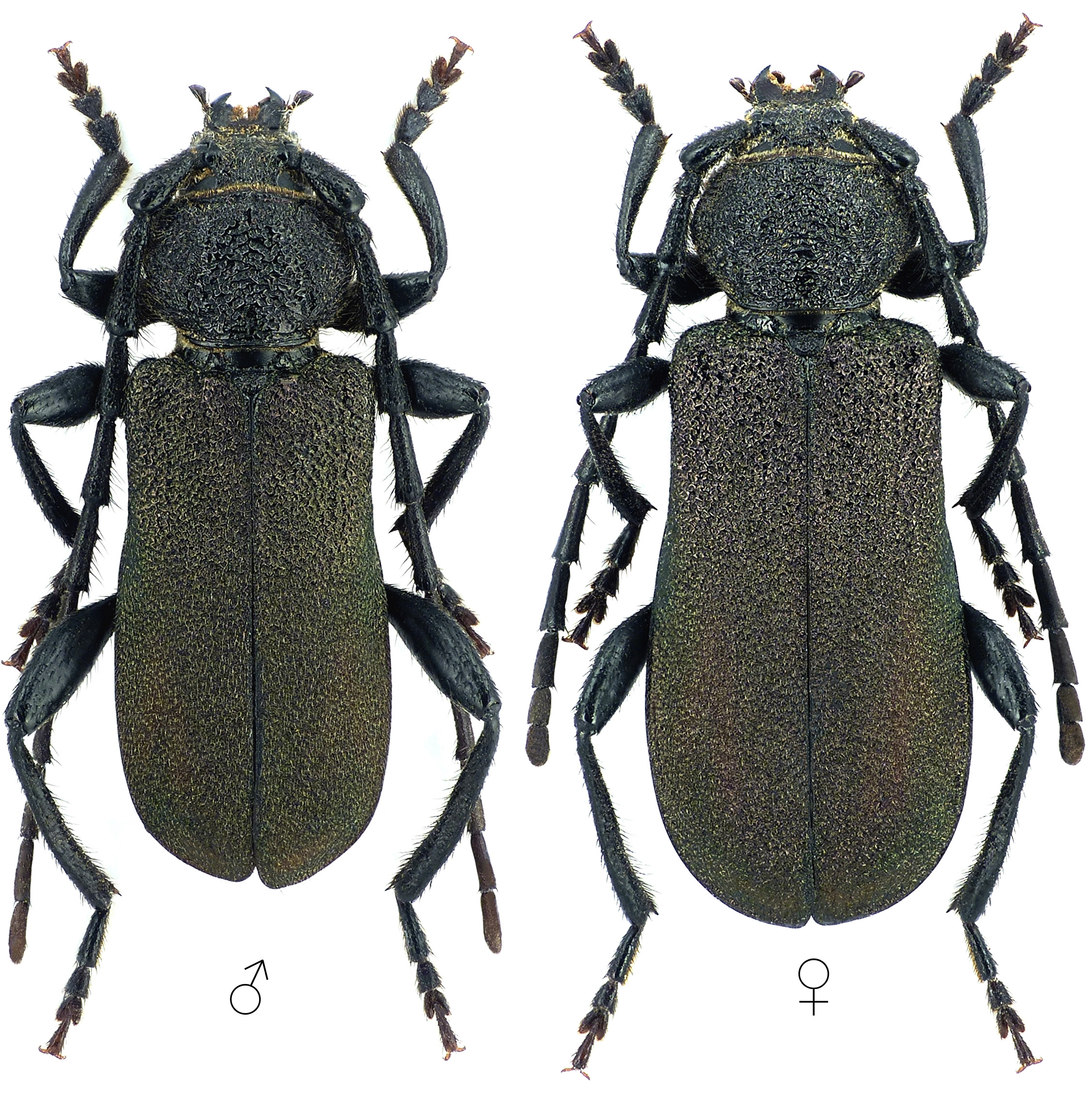[= Rhopalopus nigripes Pic, 1926]
Subfamilia: CERAMBYCINAE / Tribus: CALLIDIINI

[Photo © David Navrátil & 8K postprocessing Michal Hoskovec]
Ropalopus lederi, a rare Caucasian faunistic element, has been described from Caucasus by Ludwing Ganglbauer in 1882 [✧]. R. lederi inhabits deciduous and mixed forests, groves and orchards, larvae are developing in maples (bionomy is similar to that of a sister species Ropalopus ungaricus ungaricus). Adults are active from June to August [▽].
Body length: 9 - 23 mm Life cycle: 2 - 3 years [?] Adults in: June - August Host plant: maples (Acer spp.) Distribution: Caucasus and Crimea, Southern Russia (Krasnodar Krai, Adygea), Georgia, Azerbaijan, Armenia
The depicted mounted beetles were reared from larvae found in dead maple (Acer sp.). Collected by J. Pokluda on Lomismta Mt. (2140 m a.s.l., NP Borjomi, Georgia) in May 2018.
[✧]
Ganglbauer L.:
Bestimmungs-Tabellen der europäischen Coleopteren. VII. Cerambycidae.
Verhandlungen der kaiserlich-königlichen zoologisch-botanischen Gesellschaft in Wien 31 [1881]: 681-758, 1882. [download]
[▽]
Karpiński L., Szczepański W.T. & Kruszelnicki L.:
Revision of the Ropalopus ungaricus/insubricus group (Coleoptera: Cerambycidae: Callidiini) from the western Palaearctic region.
Zoological Journal of the Linnean Society XX: 1–41, 2020. [download]
| Subfamilia | Cerambycinae Latreille, 1802 |
| Tribus | Callidiini Mulsant, 1839 |
| Genus | Ropalopus Mulsant, 1839 |
| Subgenus | Ropalopus Mulsant, 1839 |
| Species | Ropalopus (Ropalopus) lederi Ganglbauer, 1882 |
